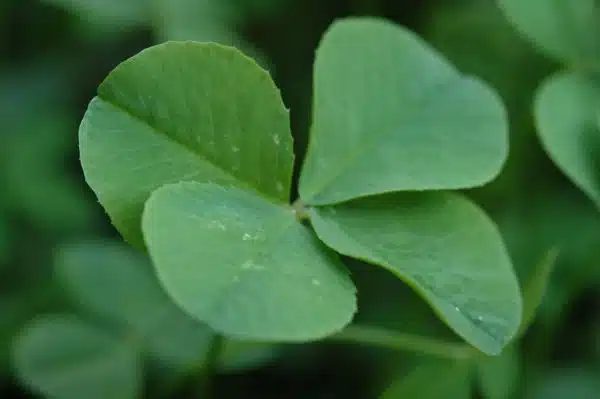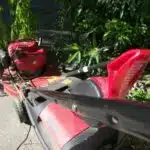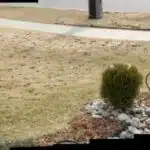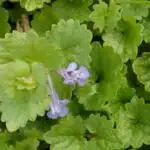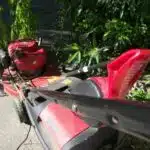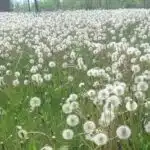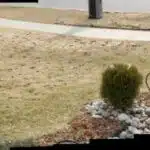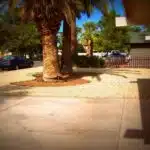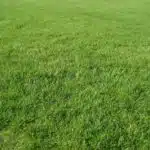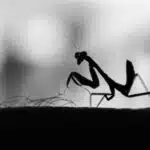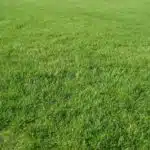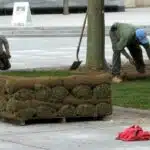Clover is a common weed that grows in lawns and gardens, often causing frustration for homeowners who are looking to maintain an aesthetically pleasing landscape. While some may appreciate the small white or pink flowers that adorn clover plants, others view them as a nuisance that needs to be eradicated. Fortunately, there are several methods available for killing clover, but it’s important to understand the biology of this plant and the most effective ways to control it.
As a horticultural expert, I have encountered many clients who struggle with clover infestations in their gardens and lawns. Clover is a tough competitor that can quickly take over areas of turfgrass or garden beds if left unchecked. In this article, we will discuss the various methods available for killing clover and provide tips on how to prevent future outbreaks. Whether you’re a homeowner seeking to improve your lawn’s appearance or a professional landscaper looking for effective ways to serve your clients, this guide will provide you with the knowledge needed to successfully combat clover infestations.
Understanding Clover’s Biology
Clover is a type of flowering plant that belongs to the Trifolium genus. It has a significant ecological impact as it fixes nitrogen in the soil, which enriches the soil and benefits other plants growing nearby. Clover’s adaptability to different soil types makes it challenging to eradicate completely. The plant can grow in various environments, including grasslands, meadows, and even disturbed areas such as roadsides.
Clover has a deep taproot system that can reach up to 30 cm below ground level. This root system enables clover to access nutrients from deeper soil layers that other plants may not reach. Clover also has an extensive fibrous root system that helps it withstand drought conditions. These characteristics make clover well adapted to various environments and contribute to its resilience against eradication methods.
Despite its ecological benefits, clover can become invasive and outcompete other plants in certain ecosystems. Identifying clover infestations is crucial for effective management strategies. By understanding the biology of clover, horticultural experts can use this knowledge to develop effective control methods without harming other beneficial plants growing in the area.
Identifying Clover Infestations
Understanding the biology of clover is an essential step in effectively eradicating it from your lawn or garden. Clover is a hardy and adaptable plant that can grow in a variety of soil types and conditions. It spreads through seed dispersal, which can occur through wind, water, or animals. Clover also has nitrogen-fixing properties, making it an important source of nutrients for other plants.
Identifying clover infestations is crucial to preventing their spread and implementing effective removal strategies. One way to identify clover is by its distinct three-leaf structure and white or pink flowers. Clover also tends to grow in patches rather than individual plants. Keeping a close eye on your lawn or garden and removing any clover patches as soon as they appear can help prevent further infestations.
There are several effective prevention strategies for clover eradication, including cultural control, chemical control, and manual removal methods. Cultural control involves creating conditions that are unfavorable for clover growth, such as regularly mowing your lawn and maintaining proper soil pH levels. Chemical control involves using herbicides specifically designed to kill clover while sparing other plants in the area. Manual removal methods involve physically pulling out the entire plant by hand or using specialized tools.
Transition: While chemical control may be an effective option for some individuals, many prefer to use manual removal methods due to concerns about the impact of chemicals on the environment and surrounding plants. In the next section, we will explore various manual removal methods for eradicating clover from your lawn or garden.
Manual Removal Methods
Manual removal methods are a simple and effective way to kill clover without the use of chemical herbicides. The first step in manual removal is to identify the location of the clover. Clover has small white or pink flowers, and its leaves are divided into three leaflets. Once you have identified the location, you can begin pulling the clover out by hand or using a garden hoe.
Another natural alternative to killing clover is by using homemade remedies. One such remedy is vinegar. Mix one part vinegar with three parts water and spray it on the clover. The acid in the vinegar will kill off the clover while leaving other plants unharmed. Another homemade remedy is boiling water. Pour boiling water over the clover, making sure to cover all of it. The heat from the water will scorch and kill off the plant.
Incorporating natural alternatives and homemade remedies for killing clover can be an effective way to control its growth without using chemical herbicides that may harm other plants or animals in your area. However, it’s important to note that these methods may not work as quickly as chemical herbicides and may require multiple applications over time for complete eradication. In our next section, we will discuss chemical herbicides for clover control, which may be a more immediate solution for controlling this persistent weed.
Chemical Herbicides For Clover Control
Clover is a common weed that can be difficult to control. Chemical herbicides can be an effective way to manage clover growth in lawns, gardens and other areas. These herbicides work by disrupting the plant’s growth or killing it altogether.
When using chemical herbicides for clover control, it is important to follow instructions carefully. Apply the herbicide during periods of active growth, typically in the spring or fall. Avoid applying on windy days or when rain is expected within 24 hours. It is also important to wear protective clothing including gloves, long sleeves and pants, and goggles.
Here are three popular chemical herbicides used for clover control:
- Glyphosate: A non-selective herbicide that kills all plants it comes into contact with.
- Triclopyr: A selective herbicide that targets broadleaf weeds like clover while leaving grasses unharmed.
- Dicamba: Another selective herbicide that works well against broadleaf weeds and can be applied post-emergence or pre-emergence.
Organic alternatives and application techniques should also be considered when managing clover growth to protect beneficial insects and soil health.
Natural Herbicides For Clover Control
Are you looking for natural alternatives to kill clover in your garden? DIY herbicides can be a great option for those who want to avoid harmful chemicals. Natural herbicides are made from ingredients that are commonly found around the home, making them easy and affordable to make.
One effective DIY herbicide is vinegar. It contains acetic acid which is an effective weed killer. Simply spray undiluted vinegar directly onto the clover plant and surrounding soil. Be careful not to spray any plants you want to keep as it will kill them too.
Another natural herbicide option is using boiling water. Boiling water can be poured directly onto the clover plant and surrounding soil, effectively killing it without harming other plants nearby. This method may need to be repeated multiple times as boiling water only kills the top growth of the plant and not the roots.
Natural alternatives such as vinegar and boiling water can be effective at controlling clover in your garden without using harmful chemicals. However, pre-emergent control methods may also be necessary to prevent future outbreaks of clover. In the next section, we will discuss these methods in more detail.
Pre-Emergent Control Methods
Herbicides are one of the most common pre-emergent control methods available, as they have the ability to penetrate the soil and inhibit weed seed germination. Mulching is another form of pre-emergent control, which involves the use of organic material to prevent weed seed germination. Solarization is a pre-emergent control method that utilizes solar radiation to heat the soil and prevent weed seed germination. Hand-weeding is a non-chemical pre-emergent control method, which involves the manual removal of weed seedlings from the soil.
Herbicides
Dealing with clover infestation can be frustrating for gardeners and homeowners. The invasive weed is known for its resilience, and manual removal is not always a practical option. Herbicides offer an effective solution to control pre-emergent clover growth. However, it’s essential to consider alternative options before resorting to herbicides.
Herbicides, such as glyphosate or 2,4-D, work by killing the plant’s roots and preventing new growth. They are typically applied in liquid form through spraying or injection. While herbicides are highly effective against clover, they also pose risks to the environment and human health. It’s crucial to follow safety guidelines when using herbicides and avoid applying them on windy days.
Alternative options to herbicides include natural methods like hand-pulling clover or using mulch to prevent weed growth. These methods may take more time and effort but provide a safer alternative to chemicals. When considering the effectiveness comparison between herbicides and alternative options, it’s important to weigh the pros and cons of each method carefully. Ultimately, choosing the right approach depends on your situation and personal preferences.
In conclusion, herbicides offer an effective solution for controlling pre-emergent clover growth. However, it’s crucial to consider alternative options before resorting to chemicals due to their potential risks. By weighing the effectiveness comparison between different methods carefully, you can choose an approach that works best for you while also ensuring safety for yourself and your environment.
Mulching
When it comes to controlling pre-emergent clover growth, mulching is a popular alternative to using herbicides. Mulching involves covering the soil around your plants with a layer of organic or synthetic material, which helps suppress weed growth while also retaining moisture in the soil. Organic mulches like straw, leaves, or wood chips are an excellent choice for gardeners who want to avoid chemical options.
Organic mulches work by blocking sunlight from reaching the soil surface, which prevents clover seeds from germinating. They also provide nutrients as they decompose and improve soil structure. Synthetic mulches made of materials like plastic or landscape fabric are another option for those looking to control weeds without chemicals. While they are less environmentally friendly than organic options, they can be more effective at suppressing weed growth.
Both organic and synthetic mulches offer benefits over herbicides. They do not have negative impacts on the environment, and there is no risk of chemical exposure to humans or animals. However, it’s important to note that mulching requires maintenance and may not be as effective against established clover plants with deep roots. Overall, when used correctly and consistently, mulching can be an effective pre-emergent control method for clover and other weeds in your garden or lawn.
Post-Emergent Control Methods
Pre-emergent control methods are useful for preventing clover growth before it even starts. However, in situations where clover has already established itself, post-emergent methods become necessary. Before learning about post-emergent methods, it is important to identify the type of clover present and understand the safety precautions associated with herbicide use.
Clover identification is crucial because different species require different herbicides for effective control. For example, white clover can be controlled using a combination of triclopyr and dicamba, while red clover requires specific chemicals such as MCPA or 2,4-D. It is also important to consider the stage of growth for the clover when selecting a herbicide. Mature plants are more resistant to chemical treatment compared to younger ones.
In addition to proper identification and selection of herbicides, herbicide safety precautions must be taken into account. Always read and follow the label instructions carefully before applying any herbicide. Wear appropriate protective clothing such as gloves and long-sleeved shirts to minimize exposure to skin. It is also important to avoid spraying on windy days or near water sources to prevent contamination.
Using fertilizer to prevent clover growth is an effective long-term strategy that complements pre- and post-emergent control methods. Fertilizers high in nitrogen promote healthy grass growth, which in turn reduces bare spots where clover can take root. A balanced fertilization program should be implemented with consideration given to soil type and grass species being grown. By following these steps, you can effectively control clover growth in your lawn or garden while ensuring safe application of herbicides for a healthy environment.
Using Fertilizer To Prevent Clover Growth
While clover may seem like a harmless plant, it can quickly take over a lawn or garden if left unchecked. However, the solution to preventing clover growth may not be as straightforward as one might think. Instead of focusing solely on eradication methods, consider using fertilizer to prevent clover from taking root in the first place.
Fertilizer application is an effective way to discourage clover growth by providing the soil with essential nutrients that support grass growth. By regularly fertilizing your lawn or garden, you can create an environment that is less hospitable for clover to thrive. Additionally, proper fertilization can help maintain healthy soil pH levels, which further deters clover growth.
It is important to note that not all types of fertilizer are created equal when it comes to preventing clover growth. Look for a fertilizer that is specifically designed for use on lawns and gardens and contains high levels of nitrogen. This nutrient helps promote grass growth while limiting the spread of clover. Additionally, make sure to follow the manufacturer’s instructions carefully when applying fertilizer to avoid over-fertilization, which can actually encourage weed growth instead of deterring it.
As we have seen, using fertilizer is an effective means of preventing clover growth in your lawn or garden. While this approach may require more time and effort than simply removing existing plants, it offers a long-term solution that promotes healthy soil and grass growth while limiting weed infestations. In the next section, we will explore mowing techniques for controlling any remaining clover in your lawn or garden.
Mowing Techniques For Clover Control
Mowing is an effective and affordable way of controlling clover. However, it requires a specific technique to maximize its efficacy. Clover mowing techniques differ from standard mowing practices since the goal is not just to trim the grass but also to remove the clover plants.
The first step in clover mowing is to set the optimal cutting height. The ideal height for removing clover is between 1 and 2 inches high. This height will ensure that you are removing most of the clovers without damaging your lawn’s health. Additionally, this optimal cutting height will help reduce soil moisture loss caused by evapotranspiration.
Secondly, use a sharp lawnmower blade when mowing your lawn. A dull blade will tear the plant instead of cutting it cleanly, causing damage that can lead to disease or pest infestation. Also, avoid mowing wet turf as it can cause soil compaction and harm your lawn’s root system.
Finally, after mowing your lawn, clean your equipment thoroughly before storing it safely. This will prevent any potential spread of weeds or diseases to other areas of your yard during future routine maintenance.
- Use a reel mower for improved precision.
- Mow frequently during peak growing seasons.
- Apply fertilizers at the recommended rate for better growth.
- Water deeply and less often to promote deeper root systems.
- Avoid overgrazing pastures or lawns with livestock since they could pick up weed seeds from one area and deposit them into another through their droppings.
In conclusion, using proper clover mowing techniques can be an effective way of controlling unwanted clovers in your yard while promoting healthy grass growth. To maximize its effectiveness, set the optimal cutting height between 1 and 2 inches high and use a sharp lawnmower blade when mowing wet turf. Lastly, clean your equipment thoroughly after each use to prevent any potential spread of weeds or diseases to other areas of your yard. The next step in controlling clover is to explore soil amendments for clover control, which we will discuss in the subsequent section.
Soil Amendments For Clover Control
Clover is a persistent weed that can take over your lawn or garden if not managed properly. One way to control clover growth is by amending the soil with specific nutrients that inhibit its growth. This method involves adjusting the pH of the soil and incorporating composting benefits.
pH adjustment is a crucial step in controlling clover growth as it prefers to grow in soils with a neutral pH level. To counter this, adding lime to the soil can increase the pH level, making it less conducive for clover growth. On the other hand, sulfur can be used to lower the pH level of alkaline soils, creating an environment unsuitable for clover.
Composting benefits should not be overlooked when trying to control clover growth in your lawn or garden. Composting enriches soil with essential nutrients and microorganisms that improve plant health and promote root development. Incorporating compost into your soil will help suppress clover growth by increasing competition among plants for resources such as water, nutrients, and sunlight.
Transitioning into the subsequent section about ‘companion planting to deter clover growth’, another effective method of controlling clover is by planting certain plants nearby that discourage its growth. By combining these methods with soil amendments, you can effectively manage and prevent clover from taking over your lawn or garden without resorting to toxic chemicals or expensive treatments.
Companion Planting To Deter Clover Growth
As the old proverb goes, prevention is better than cure. When it comes to controlling clover in your garden, companion planting strategies can be an effective way of keeping it at bay. Clover thrives in nitrogen-rich soil, so planting plants that have a high demand for nitrogen can outcompete the clover and reduce its growth. Some examples of such plants include beans, peas, and corn.
Another natural deterrent for clover growth is to plant aromatic herbs such as basil or thyme around the garden. These herbs release oils that repel pests like aphids and mites that may feed on the clover. Additionally, planting marigolds in between crops has been shown to deter nematodes that damage plant roots and promote clover growth.
Incorporating companion planting strategies and natural deterrents into your gardening routine can help control clover growth without resorting to harsh chemicals. These techniques not only benefit your garden but also promote a healthy environment for all living organisms. In the subsequent section, we will explore other prevention techniques for future outbreaks of clover in your garden.
Prevention Techniques For Future Outbreaks
- The development of effective vaccination strategies is essential in preventing future outbreaks of clover.
- Adherence to proper sanitation practices is essential for limiting the spread of clover and other diseases.
- Establishing comprehensive disease surveillance systems can provide early warnings to help reduce the impact of future outbreaks.
- The use of pesticides, biological controls, and cultural practices is recommended to reduce the spread of clover in agricultural systems.
- The use of resistant cultivars is a viable option for reducing the impact of clover outbreaks.
- The implementation of integrated pest management strategies is recommended to ensure the long-term success of prevention efforts.
Vaccination Strategies
As a horticultural expert, I understand the importance of prevention techniques for future outbreaks of clover infestations. One effective strategy in preventing the spread of clover is through vaccination. Vaccines work by providing immunity to individuals against specific diseases. In the case of clover infestations, vaccines can be developed to target specific strains of the plant that are causing problems.
When considering vaccination strategies, it is essential to take into account vaccine effectiveness and herd immunity. Vaccine effectiveness refers to how well a vaccine can protect an individual from contracting a disease. Herd immunity, on the other hand, refers to the indirect protection that vaccinated individuals provide to those who cannot receive vaccinations due to medical reasons. By vaccinating as many individuals as possible, herd immunity can be achieved, reducing the overall spread of clover infestations.
Overall, vaccination strategies are crucial in preventing future outbreaks of clover infestations. As a society with a subconscious desire for serving others, we must prioritize preventative measures such as vaccinations to protect ourselves and our communities from harm. By understanding vaccine effectiveness and herd immunity, we can make informed decisions about our preventative measures and work towards a healthier future without clover infestations.
Sanitation Practices
The prevention of future clover infestations requires a comprehensive approach that involves various strategies. While vaccination is an effective preventative measure, there are other methods that can be implemented to reduce the risk of outbreaks. One such strategy is the implementation of proper sanitation practices. The importance of sanitation practices in preventing the spread of clover cannot be overstated.
Implementing proper sanitation practices involves ensuring that all tools, equipment, and materials are thoroughly cleaned and disinfected before and after use. Additionally, it is vital to maintain a clean working environment free from debris and other potential hosts for clover infestations. By doing so, the risk of introducing new strains of clover into an area or spreading existing ones is significantly reduced.
In conclusion, implementing proper sanitation practices alongside vaccination strategies can significantly reduce the risk of future clover infestations. As a horticultural expert, I encourage individuals and communities to prioritize preventative measures such as these to protect themselves and their environment from harm. Through education and awareness-raising efforts about these preventative measures, we can work together towards a healthier future without the threat of clover infestations.
Disease Surveillance
As a horticultural expert, I believe that the prevention of future clover infestations requires a comprehensive approach that involves various strategies. While vaccination and sanitation practices are effective preventative measures, early detection of potential outbreaks is equally crucial. Early detection allows for prompt implementation of prevention strategies to prevent the spread of clover.
One effective strategy for early detection is disease surveillance. Disease surveillance involves the systematic collection, analysis, and interpretation of data on the occurrence of diseases in a particular area. Through data analysis and mapping, disease surveillance can identify potential outbreaks before they become widespread. This information can then be used to implement targeted prevention strategies to contain the outbreak.
In conclusion, while vaccination and sanitation practices are crucial preventative measures in reducing the risk of future clover infestations, early detection through disease surveillance is equally important. By investing in disease surveillance programs and implementing targeted prevention strategies based on collected data, we can effectively reduce the risk of future outbreaks and protect our environment from harm.
Hiring A Professional For Clover Control
Implementing preventative measures for clover control is an effective way to avoid future infestations. However, if your clover problem has already gotten out of hand, you may need to consider hiring a professional for clover control. Outsourcing the job to a professional can offer many benefits that can save you time and money in the long run.
One primary benefit of outsourcing clover control is the experience and knowledge that professionals bring to the table. They have access to industry-standard equipment and products that are not readily available to regular homeowners. Additionally, they have been trained in proper safety procedures, ensuring that both your property and health are protected throughout the process.
While some may be hesitant about hiring a professional due to cost concerns, it is important to consider the long-term expenses of attempting to handle clover control on your own. DIY methods may seem like a cheaper solution at first glance; however, they often require multiple attempts and can lead to additional damage or even accidental harm. In contrast, hiring a professional for a one-time treatment can be more cost-effective in the long run.
Environmental considerations must also be taken into account when controlling clover growth. Chemical treatments used by professionals can have unintended consequences on surrounding plant life or water sources if not applied properly. Therefore, it is crucial to work with a qualified expert who will take necessary steps to minimize any environmental impact during the treatment process.
Transition: As we’ve seen, hiring a professional for clover control offers many advantages over attempting DIY methods alone. However, it’s important not only to consider cost savings but also environmental factors when seeking out professional services. Let’s explore these considerations further in the next section on environmental considerations for clover control.
Environmental Considerations For Clover Control
Imagine a field of clover, vibrant and alive, swaying in the gentle breeze. To some, this sight may evoke feelings of nostalgia and comfort. However, for those seeking to kill clover, this image can be daunting. While it is important to control the growth of clover in certain areas, it is crucial to consider the effects on biodiversity and pollinators.
When it comes to killing clover, it is essential to consider alternative methods that do not harm other plants or animals in the same area. Here are some techniques that can help control clover growth while still preserving biodiversity:
- Hand-pulling: This method involves physically removing the clover from the ground by hand. It requires patience and persistence but can be effective for small patches of clover.
- Mulching: Applying a layer of organic material such as leaves or wood chips can smother the clover and prevent further growth.
- Solarization: This technique involves covering the affected area with clear plastic sheeting, which traps heat and kills off any vegetation below.
Clovers play an important role in supporting pollinators such as bees and butterflies. Eliminating all traces of clover may have unintended consequences on these vital species. Instead of completely eradicating them, we must strive for balanced coexistence through proper monitoring and maintenance for long-term clover control.
Monitoring And Maintenance For Long-Term Clover Control
Once clover has established itself in a lawn or garden, it can be difficult to remove completely. One of the reasons for this is the extensive root system that clover plants develop. These roots are very efficient at absorbing nutrients from the soil, which makes clover a persistent competitor with other plants in the area. In order to effectively control clover growth, it will be necessary to monitor and maintain the area over time.
One important aspect of maintaining clover control is to ensure that the soil remains healthy and biodiverse. This means taking steps to protect and promote beneficial microorganisms like bacteria and fungi, which can help break down organic matter in the soil and make nutrients available to plants. Additionally, it may be helpful to regularly add compost or other organic matter to the soil, which can improve its overall structure and health.
Another key factor in long-term clover control is regular monitoring of the area. This may involve performing regular inspections of the lawn or garden, looking for signs of new clover growth or other issues that could lead to increased clover populations. By staying vigilant and proactive about controlling clover growth, it is possible to keep this plant from becoming a persistent problem in your outdoor space.
Overall, successful long-term control of clover will require a combination of different strategies. By focusing on improving soil biodiversity and performing regular monitoring and maintenance tasks, you can create an environment that discourages clover growth while promoting healthy plant growth more generally. With patience and persistence, it is possible to achieve lasting success in controlling this common weed.
Conclusion
Clover, a common weed found in lawns and gardens, can be a nuisance to homeowners. Understanding the biology of clover is essential in developing effective control methods. Identification of clover infestations is crucial for selecting the appropriate manual removal or herbicide application. Manual removal methods are labor-intensive but can be effective in small areas. Chemical herbicides provide fast and easy control but require careful application to prevent damage to desirable plants.
Natural herbicides such as vinegar and corn gluten meal offer an organic alternative for clover control. Prevention techniques, including proper lawn maintenance and soil testing, can reduce the chances of future outbreaks. Hiring a professional for clover control may be necessary for severe infestations or for those who prefer not to handle chemical applications themselves.
Environmental considerations must be taken into account when selecting herbicides and applying them to the environment safely. Monitoring and maintenance are critical for long-term clover control success. In conclusion, controlling clover requires proper identification, understanding its biology, selecting the right control method, and considering environmental factors while maintaining vigilance through monitoring and maintenance activities.
Image Credits
- “Four Leaf Clover 068” by cygnus921 (featured)

